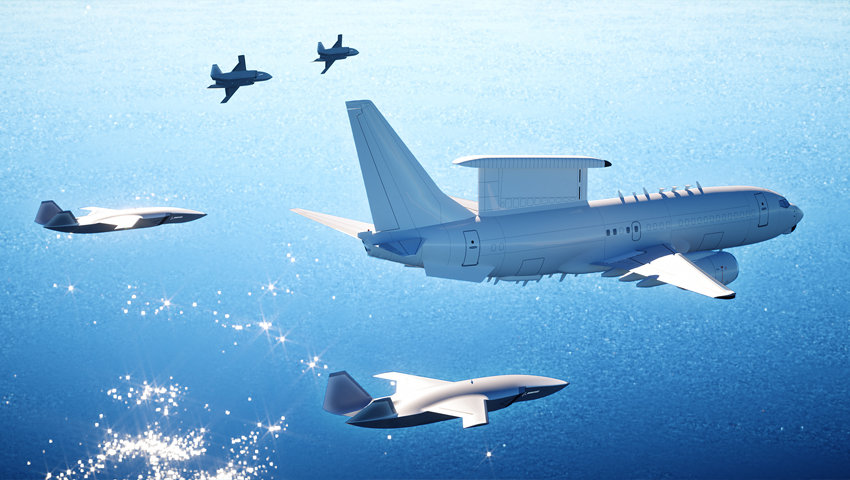Autonomous systems are changing the way the ADF and militaries around the world conduct operations. Supporting combat, humanitarian and intelligence roles, the scope for evolution in these leading-edge capabilities is playing a key role in the development of existing and follow-on systems for Australia and its allies.
ADF’s current capability
The Australian Army & ADF operates the RQ-7B SHADOW 200 to provide intelligence, surveillance, target acquisition and reconnaissance (ISTAR) support for its ground force, by carrying a number of high resolution cameras above soldiers to provide information about activities on the ground.
With an eight-hour flight time, ground forces have the ability to receive footage and data from the SHADOW 200 using ground terminals.
Upon it’s delivery in August 2011, it became the first of two US Army systems introduced that is purpose-designed to assist with expeditious operational deployment.
Its first deployment was in March 2012 by 20 STA Regiment in Afghanistan, and was soon off and running in supporting Australian and allied troops.
By September the following year, the capability had reached 10,000 flying hours.
SHADOW 200 replaced the ScanEagle system for the UAS capabilities of the Army, which is still used by the Royal Australian Navy.
The ScanEagle platform is manufactured by Boeing, and is one of the most widely used unmanned systems in the world, with over 1 million flight hours recorded globally.
The system is similar to SHADOW 200 in that it provides real time data to a ground control system, however it is preferred by the Navy due to its ability to operate different payloads that range between electro-optical and infrared capabilities to maritime automatic identification system (AIS).
Other payloads that can be deployed by ScanEagle include Visual Detection and Ranging (ViDAR), and identification friend or foe (IFF).
The ScanEagle system consists of multiple remotely piloted aircraft (RPA), a pneumatic catapault launcher, a Skyhook recovery system, and a ground control system (GCS) with associated antennas and interconnections necessary for command and control of the RPA component, and typically carries one primary payload.
ScanEagle conducted the RAN’s first simultaneous operations of manned (MH-60R Seahawk) and unmanned aircraft during HMAS Newcastle‘s deployment to the Middle East region as part of Operation MANITOU.
The RAN also uses the S-100 Camcopter for its UAS needs, which was ordered in February 2017, and consists of one or more remotely piloted aircraft (RPA) and a ground control station (GCS), with VTOL capabilities and designed to carry multiple payloads “simultaneously for up to six hours at a time”.
The S-100 is operated by 822X Squadron.
The RAAF used to operate the Heron RPAS, however it was retired from service in June 2017.
Looking forward
Australia and the ADF has clearly signalled their intentions of advancing their UAS capabilities, arguably most notably with the unveiling of Boeing’s “Loyal Wingman” program that is going to be designed and developed in Australia, for the RAAF.
The announcement was made at Avalon Airshow, and is Boeing’s largest investment in a new unmanned aircraft program outside of the US.
The Boeing Airpower Teaming System is expected to:
- Provide fighter-like performance, measuring 38-feet long (11.7 metres) and able to fly more than 2,000 nautical miles;
- Integrate sensor packages onboard to support intelligence, surveillance and reconnaissance missions and electronic warfare; and
- Use artificial intelligence to fly independently or in support of manned aircraft while maintaining safe distance between other aircraft.
The last capability is particularly important, and clearly designed to work in tandem with the RAAF’s fleet of F-35A JSF aircraft.
It’s also telling that the RAAF, as well as the defence industry as a whole, sees the value of UAS working in supporting roles for manned aircraft, rather than working towards moving towards a totally autonomous battlespace.
That program is still some ways away, with the closest UAS capability to being delivered is the MQ-4C Triton.
Designed from the ground up to focus on high-altitude long-endurance (HALE) surveillance and reconnaissance capabilities, Northrop Grumman’s Triton seemed perfect for meeting the Abbott government’s ‘Stop the Boats’ and border security policies. However, increasing tensions in the South China Sea (SCS) have provided a new suite of mission requirements for Australia’s future surveillance drone fleet.
Remotely flying out of RAAF Edinburgh, South Australia, the Triton’s are capable of monitoring 40,000 square kilometres a day and seamlessly flying a round trip for sustained surveillance and in support of allied Freedom of Navigation Operations (FONOP) in the SCS from the Northern Territory – increasing Australia’s interoperability with key allies, particularly the US.
Stepping into the close-air-support role in the autonomous space is the down selection of the Reaper family. Recognised as the warfighters’ choice, the MQ-9 is part of GA-ASI’s Predator series of RPAS, which is an armed medium-altitude, long-endurance (MALE) RPAS, and hails from a family of RPA systems that recently surpassed 5 million flight hours.
Scope for Aussie strike systems
The advent of increasingly complex and capable unmanned strike platforms like the Reaper series of unmanned combat vehicles and the persistent long-range intelligence, surveillance and reconnaissance capabilities of the MQ-4C Triton, RQ-4 Global Hawk and the Northrop Grumman RQ-180, all provide highly successful platforms and technology demonstrators.
Additionally, the recent announcement of the joint Defence Science and Technology and Boeing development of the ‘loyal wingman’ or ‘Boeing Airpower Teaming System’ concept provides avenues for Australia to partner with defence industry primes and allies to develop a long-range, unmanned, low observable strike platform with a payload capacity similar to or indeed greater than the roughly 15-tonne payload of the retired F-111.
Such a capability would also enjoy extensive export opportunities with key allies like the US and UK, who could operate the platform as a cost-effective replacement for larger bombers like the ageing B-52H Stratofortress, B-1 Lancer and B-2 Spirit, and supplement for the in-development B-21 Raider long-range strategic bomber.

